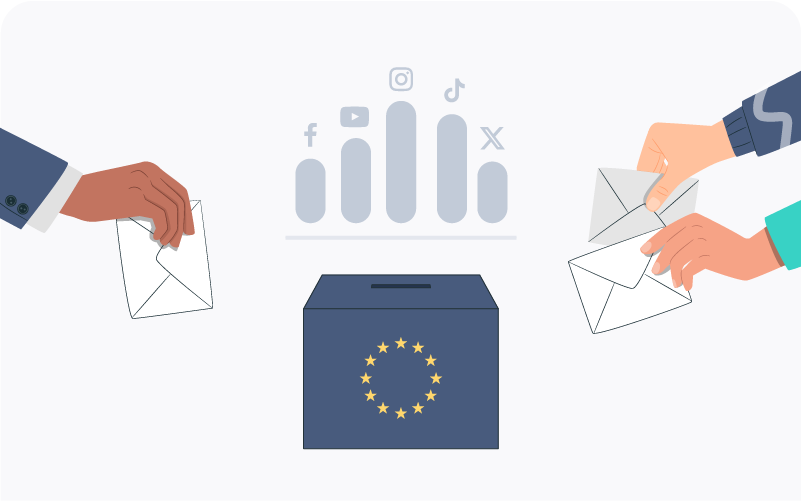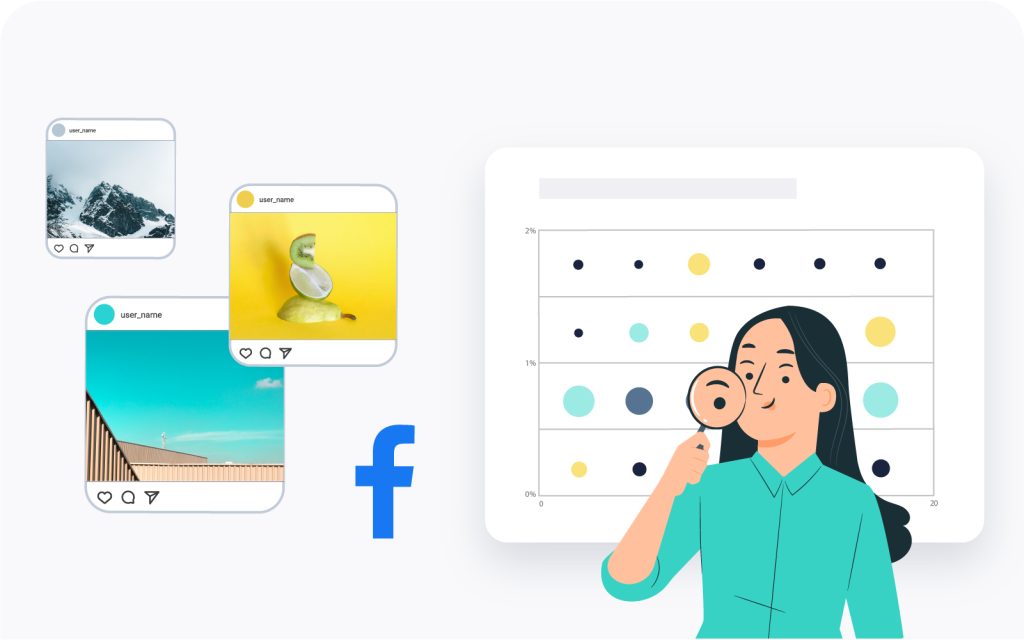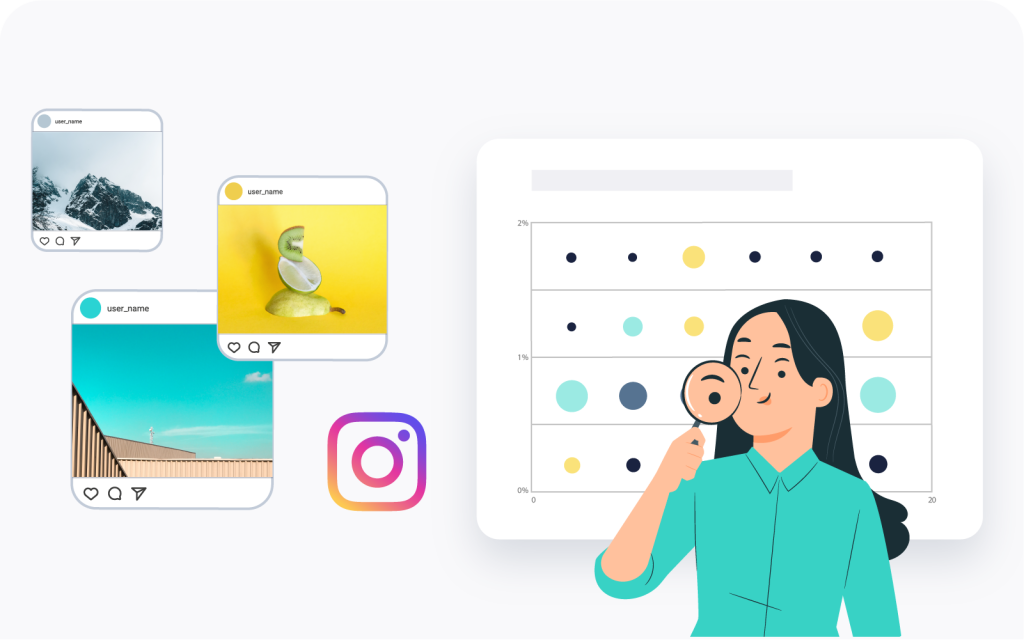Influencer Marketing Tips

Many marketing managers may hear about the power of influencer marketing for businesses and brands who have enlisted celebrities to help market their products. However, if you are not a large multinational corporation, you may be wondering about how influencer marketing for small- and medium-sized businesses works and whether you can take advantage of working with influencers.
This article will go over the core elements of influencer marketing and highlight some tips and best practices. The goal is to provide an effective and actionable influencer marketing guide that breaks down the best practice related to influencer marketing in four key areas: creating your influencer strategy, finding the right influencer, implementing your plan, and monitoring/evaluating your campaigns.
What is Influencer Marketing and Why you Should Consider It
Influencer marketing involves working with content creators (influencers) who have followings on various social media channels and will post content to promote the product, service, or brand of others. An influencer’s social media profile can be a useful marketing channel since influencers have a certain impact on their followers due to their reach, status, and trust that they have built. The idea is that people who follow a particular influencer will be more apt to buy your product or become aware of your brand if they see someone they trust or admire posting about it.
Influencer marketing is usually associated with promoting certain products or services that gain higher visibility since influencers with a large following are actively promoting them. However, there is also a specific brand influencer marketing approach that is not so much about a particular product or service, but rather highlighting the of a brand in general.

While some may associate influencer marketing with B2C uses, the reality is that B2B influencer marketing is also widely used. B2B influencer marketing is geared to using influencers who create content specifically for businesses that you consider to be part of your target audience. You can then cooperate with these influencers to more easily and effectively reach those business that you would like to advertise your product or service.
Influencer Marketing Benefits
Influencer marketing can bring several benefits, most importantly the potential for reaching your target audience efficiently while leveraging the trust and authority the influencer has built with their audience. In this sense, the primary advantage of influencer marketing over other marketing approaches relates to the bond between influencers and their community that allows businesses to promote products more authentically. Where classical advertising reaches its limits, you can leverage the reach of well-known and trusted personalities to increase your brand awareness with your target audience.
We also want to emphasize the benefits of B2B influencer marketing, since many are most familiar with influencer marketing when influencers are promoting products directly to consumers. However, influencer marketing can work well for businesses of all sizes. In fact, influencer marketing for small businesses can be a great way to utilize a limited marketing budget if you find the right influencer and design a compelling campaign. The reason is that you can find influencers who have a following directly in your niche, thus helping you more accurately reach your target audience.
Now that we have explained what influencer marketing is and why you should consider it, you may be wondering how exactly to use influencer marketing correctly. You may also be thinking about what type of influencer marketing tools exist to help you along the way. In order to answer these and other questions, we will highlight some important tips and best practices for influencer marketing below.
Influencer Marketing Tips and Best Practices
In the following sections, we will present our influencer marketing guide that highlights important tips and best practices that you should follow when developing your influencer marketing campaigns. You will learn more about relevant details and how to build up your first cooperation with the right content and the right influencer.
Below, we divide our best practices into four sections:
- Developing your Influencer Marketing Strategy
- Finding the Right Influencer
- Implementing your Campaigns
- Monitoring and Evaluating your Performance
Developing your Influencer Marketing Strategy
Successful planning and management of an influencer campaign requires a solid strategy. However, what is an influencer marketing strategy? Influencer marketing strategies involve clearly mapping out your target audience, developing your content approach, defining your objectives/goals, and setting a budget. The key to understanding how to use influencer marketing in the long term is through creating a comprehensive strategy at the start, while clearly defining what you are trying to accomplish with it.
1. Understand your Target Audience
There can be certain influencer marketing trends on different social media channels, whether it be Facebook, Twitter, Instagram, TikTok, YouTube, or any other channel. You need to always keep in mind that influencer marketing is only successful if your buyer personas match the target group of the influencer and whose campaigns are tailored to a specific social media channel.
The first thing that you need to do is know who your audience is and where they are active on social media. What demographic groups make up your target audience? What type of content or messaging resonate with these groups? What social media channels are they on? Answering these questions can go a long way in helping you in identifying what social channels you should be considering for your influencer marketing campaign and what influencers you should work with.
2. Develop your Content Approach
Before contacting an influencer, you need to define a clear content approach related to your messaging, tone, and style. On social media, content is not just about words you are posting but also what images and post types (i.e. carousels, stories, reels, etc.) you are using. Most of all, you need to ask yourself about what you want to say about your brand, product, or service. You then must determine what is the best way to say it.
Along these lines, it is important to develop your content approach for the specific social media networks that you are active on. In reality, Facebook, TikTok, YouTube, Twitter, LinkedIn, and Pinterest influencer marketing may have some differences in approaches. In other words, you should be aware of what content types are most successful on each platform. The key to understanding, for example, how to use influencer marketing on Instagram is to tailor your content to that specific platform and determine what type of content will work best for your business (e.g. carousels, Reels, etc.).
You need to ask yourself the question of where, on which profiles, and in what way your products should be shown. Do you want your product to be presented in an in-depth test via a You-Tube video, or just briefly presented in an Instagram Reel? Think carefully about how you can show your product most effectively, and consider all the important aspects.

It should go without saying, but you need to align your own content approach with that of the influencer you are working with. Think in advance about the details that should be included in the product presentation and which wording should be considered. In this way, you can create a well-defined content framework with the influencer but also leave the influencer with the freedom to bring in his or her own individual touch. At the end of the day, you want the influencer’s content to come off as authentic.
3. Define your Campaign Objectives
A goal-oriented strategy is a must when conducting an influencer marketing campaign. This is because you need to have clear goals and objectives so you can evaluate your campaign.
There are many objectives for an influencer campaign, and it is perfectly fine to have more than one. However, make sure that you are focused on specific goals and don’t try to make a campaign hit every KPI imaginable. Expanding your brand’s reach and generating more sales can both occur as a result of an influencer marketing campaign but, generally speaking, campaigns with very narrow and targeted goals are easier to manage. Some examples of various goals you may want to achieve with your influencer marketing campaigns are as follows:
- Improve reach and brand awareness
- Generate sales
- Increase website traffic
- Create more followers for your business’ profiles
However, these goals require the tracking of specific metrics to help you assess whether you are meeting your goals. When determining what your ultimate goals are, it is always important to define what metrics you will track that will help you assess whether you are meeting these goals. These influencer marketing KPIs can be one or more of the following:
- Impressions
- Clicks
- Post Interaction Rate (i.e. comments, likes, shares)
- Website Visits
- Sales
Always be sure that you have clear goals in mind and that you can actually measure these goals. Without this, you will not be able to evaluate the success of your influencer marketing campaigns.
4. Set your Budget
Setting a clear budget and tracking your expenses is essential for calculating your ROI. As any marketing or social media manager knows, there are budgetary restraints to any type of campaign.
While you have specific goals in mind as discussed in the last step, it is also important to understand what it might cost you to reach those goals so you can determine if it makes sense to run the campaign. After all, the cost of influencer marketing is tied to what influencer you end up choosing. While a specific influencer may give you a better chance at reaching your overall goals (i.e. high number of sales, more website traffic), the price that they charge may exceed your budget. In this case, you may have to find another freelancer who doesn’t cost as much.
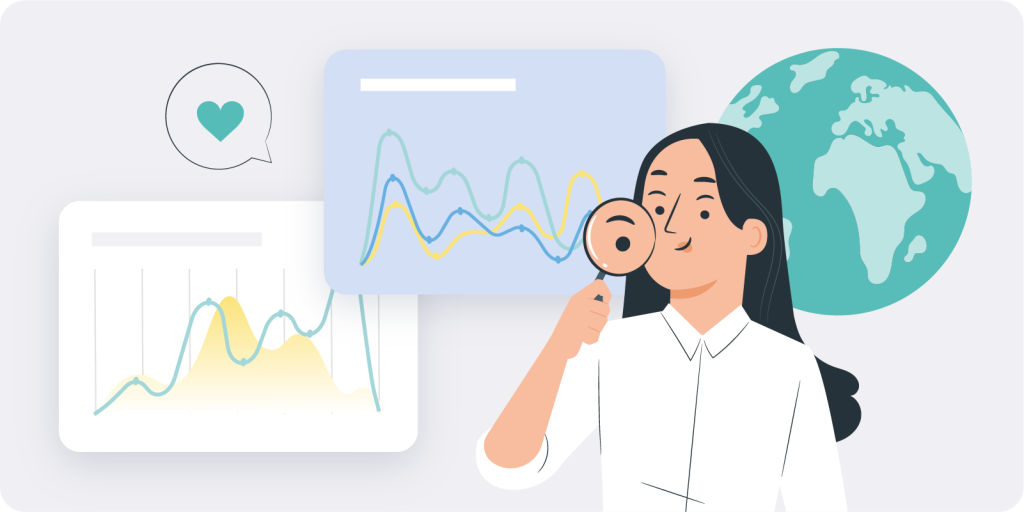
Finding the Right Influencer
There are a number of concrete steps to finding the right influencer for your business. For the most part, there are effective influencer marketing tools that can help you find the right influencer. Keep in mind that it is important to always review the relevant influencer marketing statistics associated with the profile’s of certain influencers. For instance, an influencer may have a high number of followers but, if their posts have a low engagement rate, you may want to think twice about working with them.
What we want to do here is to highlight the different types of influencers you can consider working with. Depending on your goals, target audience, and content strategy, you may want to look into what type of influencer is best suited for your needs. In reality, there are many types of influencers that differ in terms of audience size and focus, social networks utilized, and the type of content they post. Below are a few different types of influencers:
1. Social Media Influencers – Social media influencers are usually active on several social platforms such as Instagram, Facebook, Twitter, etc. These type of influencers usually have the largest following and most well-known profiles.
2. Micro-Influencers – Micro-influencers usually have a comparatively small community and a rather limited reach. Most of them have a close relationship to their followers and post on a very narrow number of topics. However, they generally come off as authentic to their followers because of this focus.
3. Bloggers – This type of influencer is mainly active on his or her own blog, as well as on social networks. Bloggers may write reviewed, paid articles about your product while promoting the article across their network.
When looking for the right influencer, you should ask yourself the following questions:
- Is the influencer active on the social media channels that your target audience uses? Does the influencer reach your target group?
- Are the previous posts from the influencer in line with your content approach? Does the influencer’s content and style match with your company and/or brand?
- How many followers does the influencer have? What is the average engagement rate?
- How much does the influencer cost? Can they provide the KPIs for the previous campaigns they have done with other companies?
We recommend that, before speaking with influencers, you clearly answer each question. In sum, you should take a close look at the social media presence of the person and ask yourself if the influencer matches with your company and carries the right message to the community.
Implementing your Plan: The Importance of Defining the Collaboration
When starting with a new influencer, it is essential to determine the expectations that go along with the cooperation. By doing this, you can clarify important details in advance and clear up possible misunderstandings. In the end, both sides will know what they have agreed to and what the aim of the cooperation is.
You should start by creating an influencer marketing plan that defines what will be posted and when. There are a few different ways you can approach this. One way is to generally define content in advance and give the influencer freedom to find their voice in creating the content without further input from your side. Another way is to have the influencer create the content while you review and approve content before publishing it. With this way, you have more editorial control over the content, although the influencer must also feel that their “true” voice is coming through.
It helps to involve the influencer and work out together which types of content will be most popular among the community. If users see your product in the familiar format of their influencer, it is more likely to convince them that the product is right for them. Moreover, you should always discuss how to label the content correctly (i.e. sponsored content notice) in order to avoid any legal consequences of posting paid content on the platforms without making it clear that it is paid content.
There are a few additional issues that you should think about when working with an influencer:
1. The Structure of the Collaboration
The collaboration between companies and influencers can be structured differently, with different input given from your side. For example, you can send a discount code to influencers, which they share with their community in their posts. Another common way is to send your product, which the influencer can test, review and mention on their profiles. It is also popular to invite an influencer to a corporate event. The influencer can then share their experience and draw attention to your brand.
2. The Help you can Offer
Both your company and the influencer win if the campaign is a success. For this reason, it is best practice to provide the influencer with all the help you can. For example, if you are using a social media tool, you can run an analysis to determine what the best time to post may be or what hashtags they should use in their post.
3. The Duration of the Cooperation
You should always specify the time frame for the cooperation. Do you want an influencer to share a single post, or is it a long-term cooperation that will involve several posts? Under what circumstances might you consider extending the cooperation? It is important to define what the business relationship should look like so there are no misunderstandings on either side.
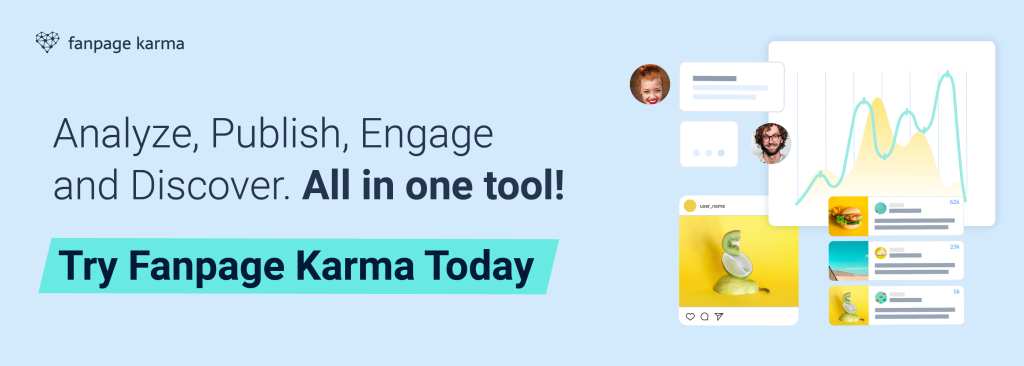
Monitor and Evaluate your Campaigns
It may seem obvious, but closely monitoring and evaluating your campaigns is essential for effective influencer marketing. This means that you need to measure influencer marketing KPIs that you define and track.
You can choose to monitor a number of influencer marketing KPIs such as:
- Clicks: How many users clicked on the link that included in the Influencer’s post of your product or company?
- Conversions: How many users bought the advertised product or visited your website during the campaign period?
- Mentions: How often was the product or your company mentioned by the influencer or its followers on social media?
- Number of Followers: Has the number of followers increased on the used networks?
- Brand Awareness: Has the awareness of your company increased?
- ROI (Return On Investment): How much did you drive in revenue due to the campaign? Did the investment in an Influencer campaign pay off?
You can also consider keeping an eye on other influencers you may want to work with to see if your campaigns may perform better if you partnered with them. There are influencer marketing tools that can help you monitor your own campaigns, as well as benchmark your performance against the profiles of competitors or other influencers you are considering working with. This can help you better evaluate your campaigns and give you an indication of whether you should change your approach.
Conclusion
At the end of the day, influencer marketing opens a new door to reach your target group and convince them of your product’s worth. When it comes to influencer marketing, it is important to pay attention to the objectives of your cooperation and always keep them in mind for your strategy. This is key in understanding how to use influencer marketing to grow your business. It is also important to keep evaluating and adjusting your campaigns as needed in order to help better your performance.
If your business is looking to work with influencers, you should consider finding a social media tool that helps you find influencers and analyze your performance, as well as that of your competitors. Fanpage Karma offers an all-in-one social media tool that has benchmarking, publishing, community management, and influencer research features. Try it out with a free 14-day trial.
You can also participate in Fanpage Karma’s free weekly webinar.


